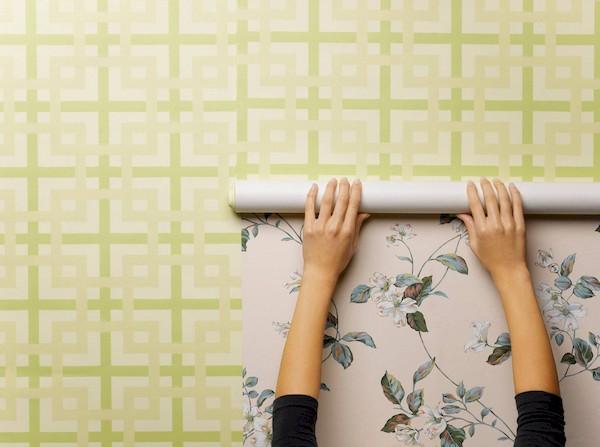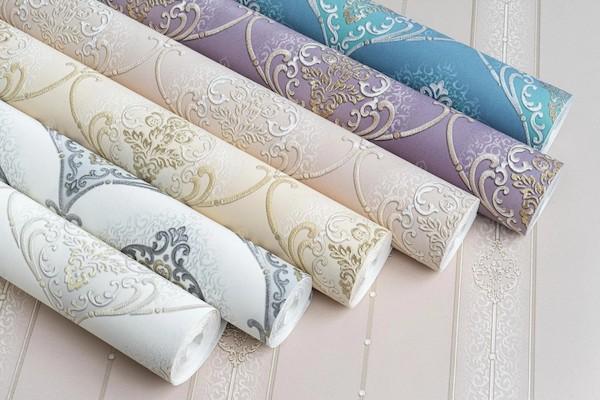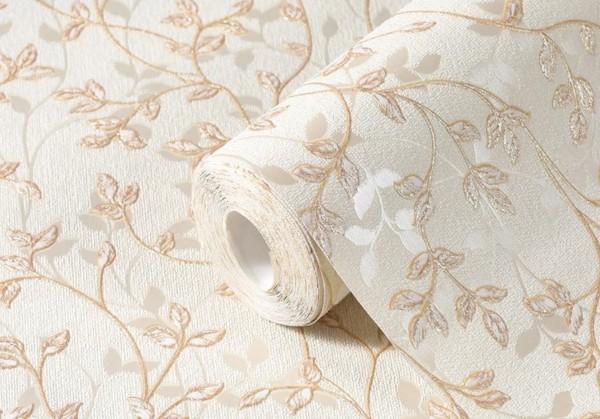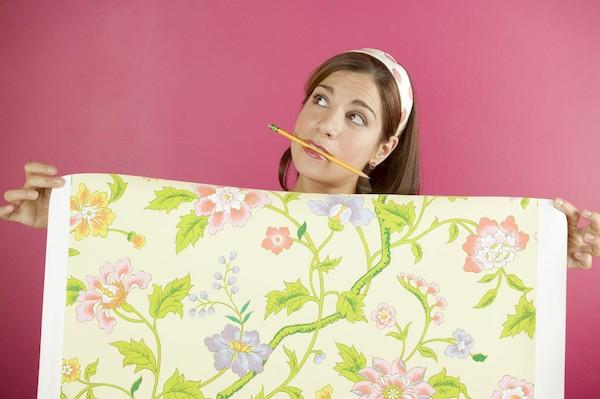But is it possible to glue wallpaper onto old wallpaper and why did they do this before?
Content:
In some cases, you can glue wallpaper onto wallpaper: if the old covering is paper, the non-woven vinyl layer has been removed, there are no serious defects. But the result will always be of lower quality than when applied to prepared walls. We advise you to weigh the pros and cons before making a decision.
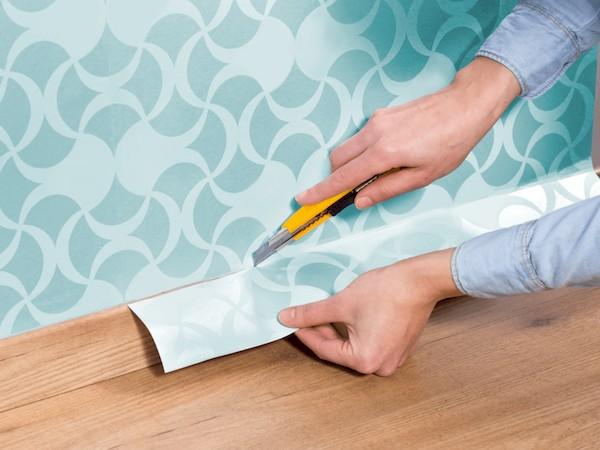
Advantages and disadvantages of gluing old wallpaper
Quite a lot of people who carry out repairs on their own think: “Shouldn’t I stick wallpaper on the wallpaper, it’s less of a hassle?” But something inside tells me that doing this is not entirely correct. Let's look at all the pros and cons of this step:
| Advantages | Flaws |
| time saving | the canvas may not hold well and bubble a lot |
| saving effort | unevenness may be noticeable |
| cleanliness - no dust or debris | Possible color distortion, pattern translucency |
| there is no risk of damaging the base (especially if there is drywall under the wallpaper layer) | glue consumption may increase |
| the base cannot be leveled |
In general, cosmetic repairs without removing the old coating is a rather risky undertaking. There is no guarantee that the wallpaper will hold up.You can waste time and energy. Only in rare cases is such express repair really justified.
Is it possible to glue wallpaper onto wallpaper?
It is not advisable to do this. Specialists always clean the walls to the base, level them, and seal all the cracks. Treatment can be carried out with special compounds (from mold and mildew, for better adhesion of the wall to finishing materials, etc.).
Wallpapering old wallpaper is a home option.
If you don’t really care about perfect coverage, like in luxury apartments, this method can be considered. Fresh wallpaper always looks better than old, faded, shabby wallpaper.
The quality of gluing can be quite high. The following factors increase the chances of a good result:
- new construction;
- high-quality leveled walls;
- absence of areas with crumbling plaster;
- strong glue on the previous coating (the canvas does not come off anywhere);
- old paper wallpaper, thin, smooth (without relief);
- have the same tone or lighter;
- new coatings are thicker than the previous one or the same thickness;
- absence of mold, mildew, or streaks after the flood;
- bedroom, hallway or living room (not kitchen, not bathroom).
In the kitchen, ceilings and walls can become covered with greasy deposits and combustion products; in the bathroom – with soap deposits. The coating reduces the strength of the glue, and the wallpaper will come off in places.
Paper
Many people remember how during the Soviet Union, walls were first covered with newspapers. They did this for a number of reasons:
- another layer of paper gives strength;
- the walls become warmer;
- does not show through the “grayness” of concrete.
Modern paper wallpapers can be simple, double, or washable. Regardless of the type, they are thin, easily torn as soon as they get wet, and difficult to peel off the walls.Plus - they belong to the economy segment. You can change the design of your room as often as you like without feeling a hit on your wallet. The second plus is that a new layer of wallpaper can be glued on top of the old one, and it will not be too noticeable.
Non-woven
This type can be easily removed from the walls. Often the canvas comes off entirely, you just need to pick it up with a spatula from above or from the edge at the joint.
If non-woven wallpaper consists of two layers (the bottom layer is paper), only the top covering can be removed. The paper base will serve as an excellent substrate for new wallpaper.
It is not recommended to glue a new wallpaper layer directly onto the non-woven material due to the following:
- relief on the surface may appear;
- there is a high probability that the canvas will bubble and fall off;
- Between the wallpaper layers, fungus is likely to appear.
Vinyl
For vinyl wallpaper, the same recommendations apply as for non-woven wallpaper, but with a slight amendment. Surely you know that they consist of several layers. The bottom layer can be paper, or it can be non-woven.
Non-woven vinyl wallpaper must be completely removed from the walls.
Liquid
It is allowed to apply a new wallpaper layer on top of liquid wallpaper, be it solid sheets or fresh decorative plaster. Only a noticeable relief and contrasting color can interfere with the idea. In this case, you can first apply a layer of smooth decorative plaster (preferably plain and light).
Advice. Think carefully, isn't it easier to remove the old coating? It is known that liquid wallpaper can be easily cleaned with a spatula if you first moisten it with warm water.
For painting
The material can be repainted up to 7-8 times. The only condition is that the color of the new paint should not be much lighter.You can choose a brighter or darker shade. If the wallpaper is tired of being painted or is deformed in places, it is necessary to dismantle it.
Even if the coating has never been painted, it is not recommended to glue a new layer on top. These are the same vinyl or non-woven wallpapers that need to be at least partially removed (remove the top layer).
Self-adhesive wallpaper and wall panels
Most people are interested in whether it is possible to glue self-adhesive wallpaper and 3D wall panels to old finishes. Manufacturers assure that yes. The soft foam fabric hides minor irregularities, stains, and other defects on the walls. But at the same time, the instructions say that the base for the self-adhesive must be clean, grease-free and dry. It turns out that you can glue it, but it’s better on cleaned and prepared walls.
Recommendations for gluing new wallpaper onto old ones
If you decide to glue new wallpaper over old ones, but want to get the highest quality and neatest coating, follow the rules:
- Anything that comes off, falls off, comes off, or bubbles needs to be removed. Carefully tear off the element or cut out the defect with a stationery knife.
- Wallpaper around windows, doorways, and in corners tends to stick less firmly than in other places. Try to tear them off. If they come off easily, then it is better to completely clean the area.
- For significant transitions between the old coating and bare walls, prime the unevenness with glue diluted with water.
- Glue the joints (seams) on old canvases.
- When gluing new wallpaper, use glue that is intended for it. Don't skimp on application. Dilute and use according to instructions.
Advice.If you still decide to clean the walls before pasting, use modern assistants: a “wallpaper tiger”, a roller with needles, a steam generator. The washable, dense coating is first perforated, moistened with warm water or a special solvent, waited for a while, and removed in one motion. Or they direct the steam generator head and smoothly separate the sheet from the wall.
Video on the topic (detailed answer from a specialist to the question):
Question answer
What wallpaper is best to paste over old ones?
You definitely shouldn't buy expensive wallpaper. It will be a shame if in a month or two they start to peel off. Give preference to options with small patterns or ornaments. The canvas should be slightly thicker than the previous one, optimally with relief. The bright texture and variegated colors make unevenness on the walls almost indistinguishable and distract attention from the quality of the gluing.
Which test should I take?
You can avoid an unpleasant surprise if you first glue a small piece (what remains after marking and cutting the roll) of new wallpaper onto the old one. Choose an inconspicuous place, such as at a table or behind a cabinet. The following may happen: the cut will not hold or will come off, bubbles and voids will appear. The glue will cause the paint on the previous layer to permeate the new layer - streaks will appear or the pattern will appear. The fresh coating will begin to come off along with the old one. If any of this happens, you will definitely understand that in your case the express repair will end in failure.
Let's summarize. Any wallpaper will stick better and look more attractive when hung on prepared walls, rather than on the previous coating.The method of applying wallpaper on wallpaper is best considered for utility rooms, for a summer house, as a quick way to refresh a room with a minimum of effort. If the old coating is coming off, you need to remove it at least partially. It is advisable to conduct a test before resorting to express repairs.
